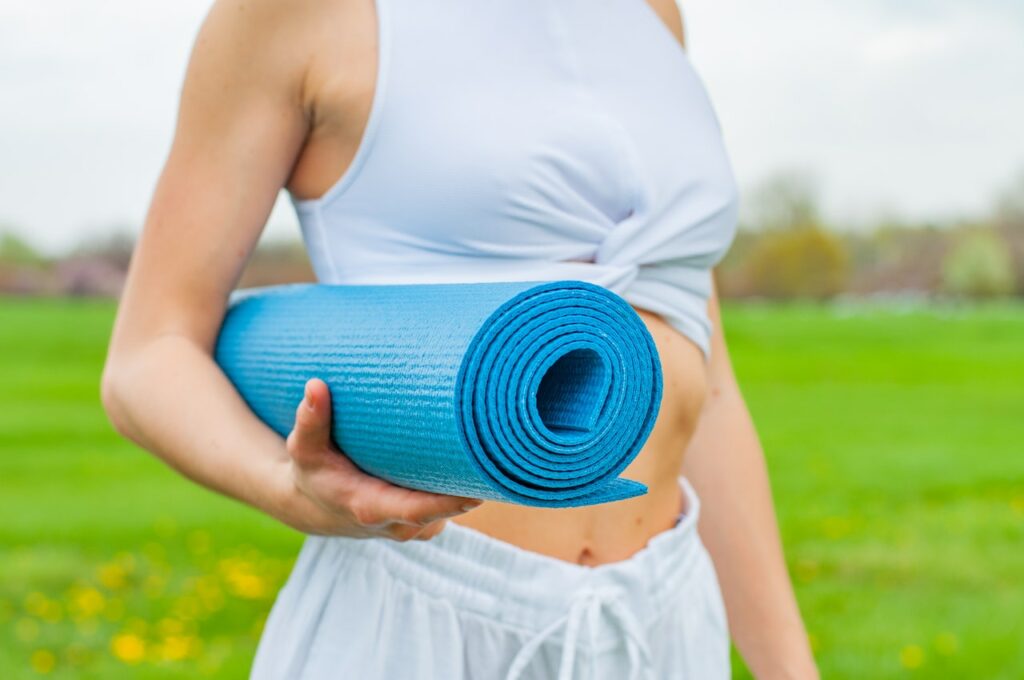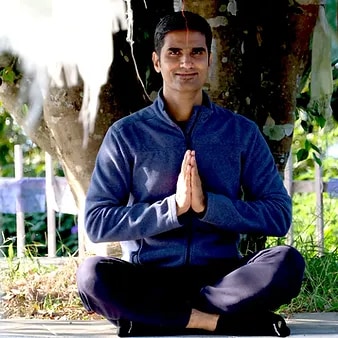5 tips to Choose the Right Yoga Mat for Yourself
by Hardik Mehta
If you want to get the most out of your daily yoga practise, you need to use the right yoga mat. But which one should you choose? There are so many types of yoga mats on the market that it can be hard to choose the right one. When looking for the best yoga mat, you can choose from a wide range of colours, shapes, materials, sizes, and thicknesses. You can get the most out of your yoga workout if you have a good yoga mat. It gives the most ease and support. When you have the right gear, it’s also much easier to make yoga a daily part of your life.

1. Thickness
You can use a thin yoga mat, a medium-thickness yoga mat, or a thick yoga mat, depending on what you need. A yoga mat usually has a width of about 1/8 inch. But it depends on what kind of yoga you are doing. The bigger, more comfortable yoga mats that start at about 1/4 inch are best for sore joints, but they are heavier and harder to balance on. Thinner mats can help you feel more stable and rooted. Thin mats also work better for vinyasa or flow styles that are more busy because they won’t bunch up. For hot yoga classes, many yogis like to use a small mat with a yoga towel on top. The choice between the thicknesses comes down to personal taste, ease, and how much experience you have. Most new yogis will feel more comfortable on a thinner, more flexible mat, while more experienced yogis may like the extra padding that comes with a thicker, extra-thick mat.
2. Where will you practice?
The yoga mat you use at home should be strong and the right size for your space. Since you usually use it in the same place every time, weight isn’t as important. If you spend a lot of time in classes and workshops, you should probably get a lighter travel mat. Most of the time, these are smaller, lighter, easier to roll up, and easier to carry.
If you’re going to practise on carpet, you’ll need a smaller, stiffer mat. If there is too much padding, it will be hard to keep your balance, and a thick mat will bunch up on a carpeted floor. If you do yoga in a studio or on a wooden floor most of the time, you might want something thicker or denser to protect your knees and wrists.
3. Choosing the right material
Yoga mats can be made of wood, natural rubber, PVC, and other materials. The best yoga mats are made of natural latex rubber or polyvinyl chloride (PVC). These products are useful in different ways. How will you know which one is best?Natural rubber mats are made from latex that comes from trees. They are soft but thick and strong. They have different textures to give you grip, and they are very easy to use. Synthetic latex is used to make synthetic rubber mats, which can also be bent. They last longer and have better grip than natural rubber mats. Cork mats are made of rubber or PVC with a thin layer of real cork on top. They last a long time and have good grip. The last kind of towel is a yoga towel, which is usually made of soft cotton or microfiber. These aren’t usually used by themselves because they make a soft layer on top of your yoga mat that soaks up sweat.
4. Stickiness and Texture
A good yoga mat is sticky enough to keep you from moving around as you change poses. If you do hot yoga, you will need a yoga towel topper to soak up the sweat so you don’t slip and it’s easy to clean up. PVC is strong, durable, and sticks to a lot of things, but it is not good for the earth. A strong natural rubber mat, on the other hand, can give you the same super-strong grip while being much more durable and lasting longer. Some mats have different textures to give you a strong grip and help you hold your asanas. How sticky and rough you need your yoga mat to be depends on the type of yoga you do.
5. Being eco-friendly
Yoga mats can be made in many ways that are good for the environment. Many yogis use mats made of natural materials, such as rubber, jute, cork, or even cotton, hemp, or wool. Some are made from materials that can be recovered, and they can also be recycled. Eco-friendly mats should not only be able to last for a long time, but they should also be free of toxins. Some things, like cotton and cork, are even made to naturally soak up sweat. Even though they need to be cleaned more often, they are usually better for your body and the world.
There are many different kinds of yoga mats, and people choose one over another for many different reasons. When choosing a yoga mat, you should think about the area you will be practising on, how you will store and move it, whether you want it to be made of natural materials, and how much support and grip you need from it.
About the Author

Hardik Mehta
Hardik is an E-RYT 500 & YACEP (Yoga Alliance Continuing Education Provider), Yoga Alliance, USA. He has been practicing yoga for the last 9 years. Prior to finding his true calling in Yoga, he was working with various corporates for 12 years in the Retail and eCommerce sector.
